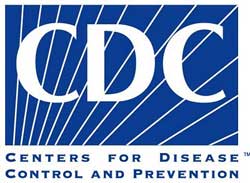In its Morbidity and Mortality Weekly Report (MMWR), the Centers for Disease Control and Prevention have released numbers of the incidence and trends of infection of foodborne illness pathogens from 1996 to 2012. The report, called the Foodborne Diseases Active Surveillance Network (FoodNet), shows that for 2012, a total of 19,531 infections, 4,563 hospitalizations, and 68 deaths associated with foodborne disease were reported. (These are the illnesses, hospitalizations, and deaths that were confirmed linked to a certain food. Most foodborne illness cases are unreported to the government.)
 FoodNet conducts active, population-based surveillance for laboratory-confirmed infections caused by Campylobacter, Cryptosporidium, Cyclospora, Listeria, Salmonella, Shiga toxin-producing E. coli (STEC) O157 and non-O157, Shigella, Vibrio, and Yersenia in 10 sites covering 15% of the U.S. population. The number of infections were as follows: Salmonella 7,800, Campylobacter 6,793, Shigella 2,138, Cryptosporidium 1,234, STEC non-O157 551, STEC O157 531, Vibrio 193, Yersinia 155, Listeria 121, and Cyclospora 15. The highest reported incidence was among children aged under five years for Cryptosporidium and pathogens other than Listeria and Vibrio.
FoodNet conducts active, population-based surveillance for laboratory-confirmed infections caused by Campylobacter, Cryptosporidium, Cyclospora, Listeria, Salmonella, Shiga toxin-producing E. coli (STEC) O157 and non-O157, Shigella, Vibrio, and Yersenia in 10 sites covering 15% of the U.S. population. The number of infections were as follows: Salmonella 7,800, Campylobacter 6,793, Shigella 2,138, Cryptosporidium 1,234, STEC non-O157 551, STEC O157 531, Vibrio 193, Yersinia 155, Listeria 121, and Cyclospora 15. The highest reported incidence was among children aged under five years for Cryptosporidium and pathogens other than Listeria and Vibrio.
In 2012, the incidence of infections caused by Campylobacter and Vibrio increased from the 2006 to 2008 period. After declines in the early years of FoodNet, Campylobacter infections increased to their highest level since 2000. Associated products that carry the bacteria include poultry, raw milk, produce, untreated water, and animal contact. Vibrio live in marine and estuarine waters. Most of those infections are caused by eating raw oysters, especially during the warmer months.
The incidence of STEC O157 infection, which had declined since 2006, was no longer decreasing in 2012, and now exceeds the previously met Healthy People 2010 target of one case per 100,000 persons. FoodNet estimates that the increase in STEC non-O157 infections reflects the increasing use by clinical laboratories of tests that detect these infections.
The report’s authors say that there are four limitations of this report. First, health care seeking behaviors might affect the generalizability of the findings. In other words, many people do not visit a doctor when they are sickened with a foodborne illness. Second, many illnesses transmitted through food, such as norovirus, aren’t monitored by FoodNet because those pathogens aren’t routinely identified in clinical laboratories. Third, the proportion of illness transmitted by nonfood routes differed by pathogen, so the data in the report don’t relate to infections from foodborne sources. And finally, in some cases counted as fatal, the infection may not have been the primary cause of death.
Caroline Smith DeWaal, Food Safety Director for the Center for Science in the Public Interest, released a statement that said, “The increased number of infections from Campylobacter and Vibrio is troubling. Targeted controls for chicken and shellfish are needed to reverse the increase. Other countries have successfully reduced Campylobacter by testing flocks for the hazard and requirement contaminated chicken to be frozen. Clearly, better controls are needed in the U.S. However, the USDA and industry are pushing for changes to poultry slaughter that would increase line speeds and decrease microbial testing. And the FDA should take immediate action to require better controls for shellfish harvesters and shippers” to bring Vibrio under control.




